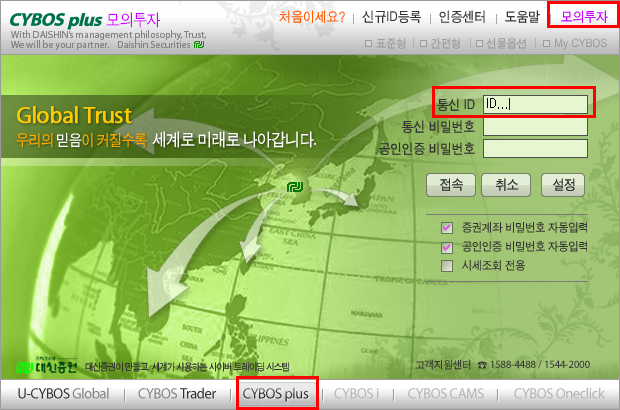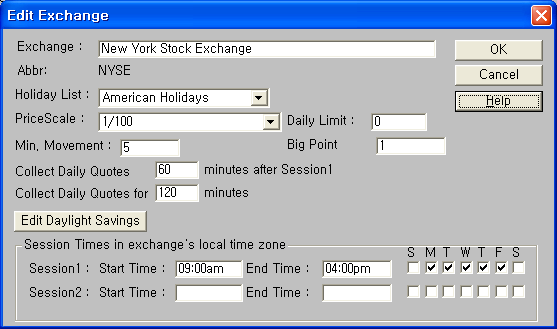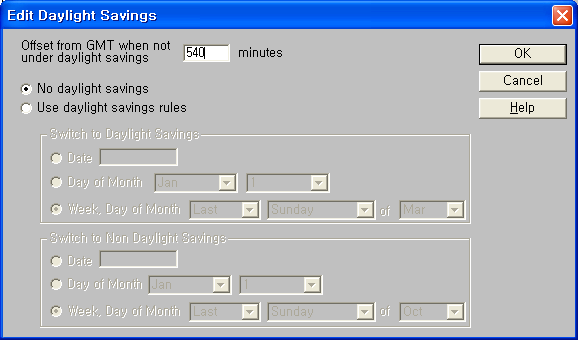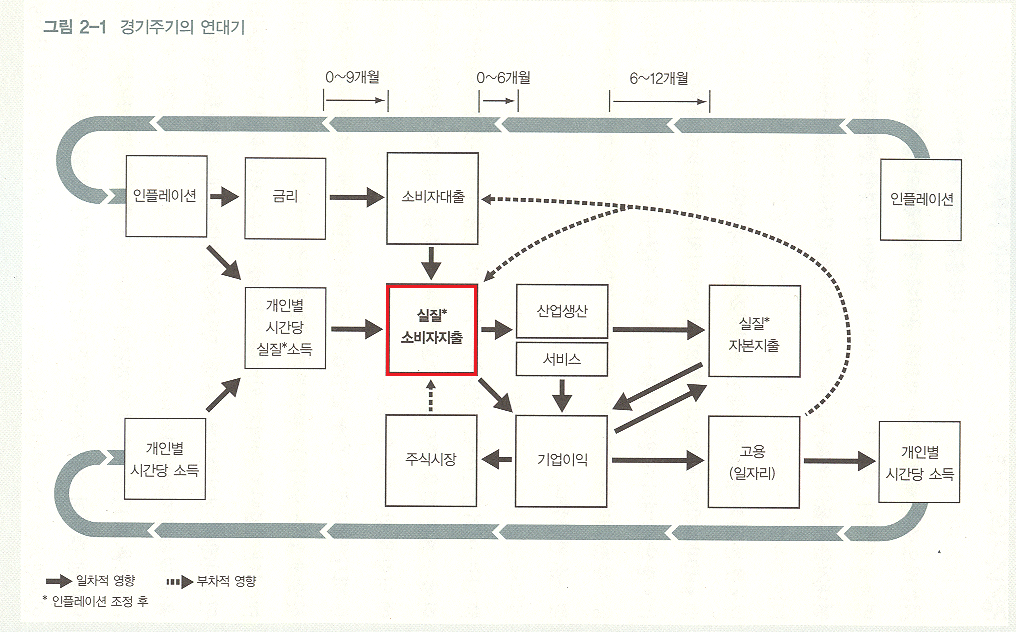1. 설정 예New York Stock Exchange와 Seoul Korea Stock Exchange를 아래처럼 설정한다.
2. 설정 내용에 대한 설명a. 선물인 경우 한 틱의 단위가 0.05이므로 위 그림 처럼 설정
(PriceScale * Min, Movement = 1/100 * 5 = 0.05 )
b. 옵션이라면 Min, Movement를 1로 설정한다. (1/100 * 1 = 0.01 )
c. 과거 기록을 보는 경우라면 Min, Movement를 100으로 설정하여 1포인트씩 사용
3. 항목 설명(Help에서 복사)a. Exchange
The exchange on which the symbol is traded.
b. Holiday List
A drop-down list showing the different types of holiday lists available, including American, London, Canadian, and MATIF. If a new holiday is added to this list, it will be posted on the Omega Research web site and you will then need to add it to your holiday list.
c. Price Scale
The fractional or decimal units in which prices are quoted by the exchange. For example, stocks on the NYSE are usually quoted in 1/8ths or 1/16ths, whereas OTC stocks are quoted in 1/64ths or 1/32nds. This field works in conjunction with the Minimum Movement and Big Point Value fields to provide an accurate representation of the value of point and fractional point moves of a symbol.
For example, an S&P 500 futures' price scale is 1/100, its Minimum Movement is 10, and its Big Point Value is 250. This means that a contract's minimum tradable increment is 10/100 (or 1/10th), and when it moves 1/10th of a point, this represents a 25 dollar change ($250 divided by 10).
Omega Research sets the Price Scale for all stocks to 1/1000 for accuracy purposes, and the Minimum Movement to 125, which equals 1/8, and all options to 1/16, with a Minimum Movement of 1, which equals 1/16.
d. Daily Limit
The maximum that commodities and options markets are allowed to rise or fall in one day. Limits are imposed on a per contract basis by the exchange on which the symbol is listed.
e. Minimum Movement
The minimum increment by which a market may trade. Minimum movement is entered as a whole number that represents x number of movements on the price scale. For example, if the symbol's price scale is 1/32 and the minimum tradable increment is 2/32, the minimum movement will be set to 2.
f. Big Point Value
The dollar value represented by a full point of price movement. In the case of stocks, the Big Point Value is usually 1, in that one point of movement represents one dollar. However, it can vary. For example, the Big Point Value for the S&P futures is 250, where 1 point of price movement represents 250 dollars.
g. Collect Daily Quotes X Minutes After Session
After a session closes, the number of minutes before settlement prices will begin to be accepted. For example, if a session closes at 4:00 p.m., and this field displays 60 minutes, settlement prices will begin to be accepted beginning at 5:00 p.m. Settlement prices will continue to be accepted for the number of minutes listed in the Collect Daily Quotes for X minutes box.
h. Collect Daily Quotes for X Minutes
After settlement prices begin to be accepted, the number of minutes that settlement prices will continue to be accepted. For example, if the session closes at 4:00 p.m., and the Collect Daily Quotes X minutes after session box displays 60 and the Collect Daily Quotes for X Minutes box displays 120, then settlement prices will be accept between 5:00 p.m. - 7:00 p.m.
i. Edit Daylight Savings
A button that displays Daylight Savings information as well as the amount by which the exchange time is offset from the GMT. If the exchange adheres to Daylight Savings rules, the date or time frame (such as 밚ast Sunday in April? when Daylight Savings takes effect is displayed as well.
Minimum Movement
The minimum increment by which a market may trade. Minimum movement is entered as a whole number that represents x number of movements on the price scale. For example, if the symbol's price scale is 1/32 and the minimum tradable increment is 2/32, the minimum movement will be set to 2.
4. 참고자료a. http://cafe.naver.com/subserver/2301
b. Omega Research Online User Manual









